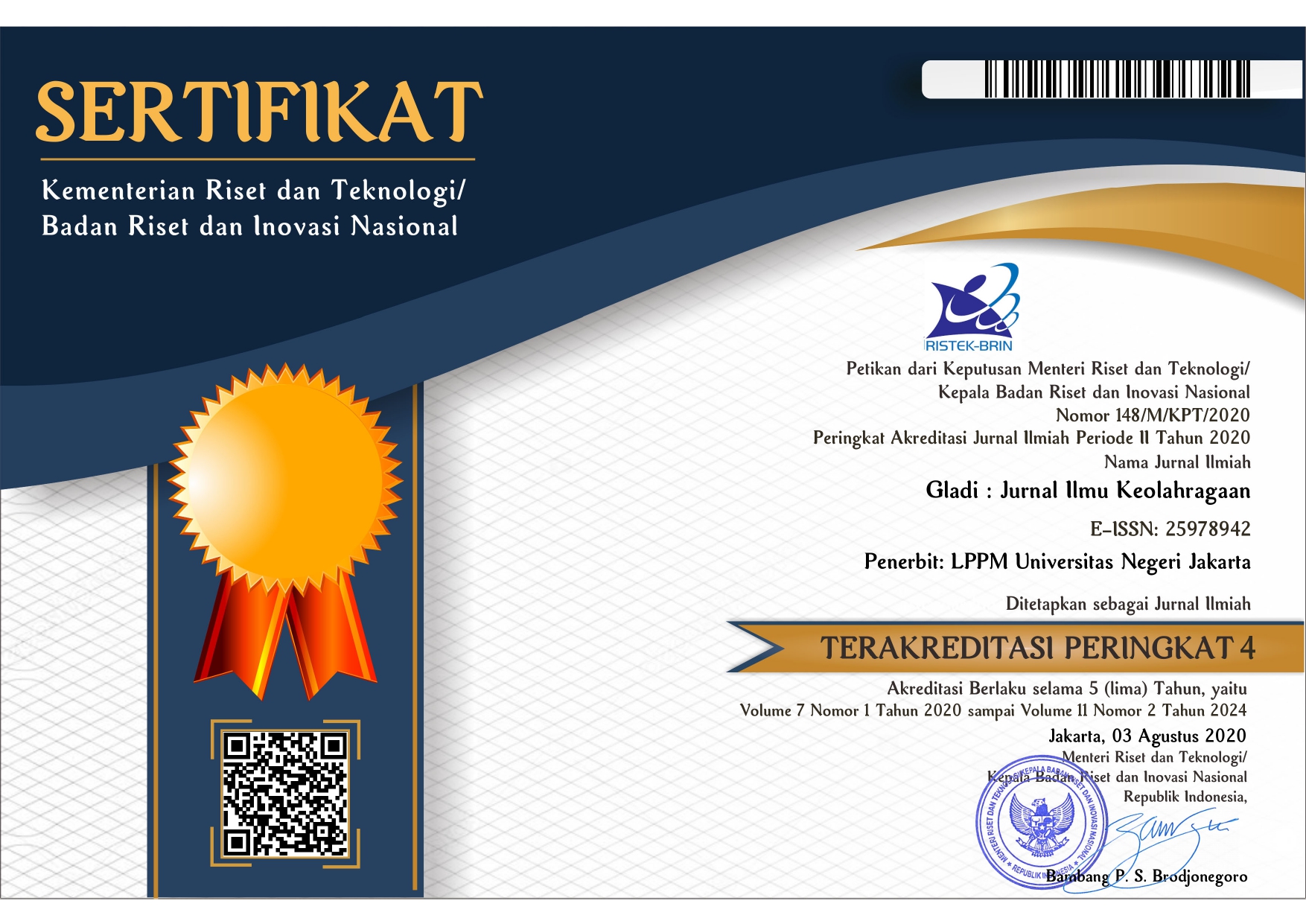The development of training model of backstroke swimming skills for children age 8-10 years old
Abstract
The research aims to result in the development of training model of backstroke swimming skills for children aged 8-10years. The subjects in this research and development were trainees of children aged 8-10 years in Elsa Nasution Swimming Club and Tirta Jaya Banten. The research method used was the research and development model from Borg and Gall. The data collection technique used was the result of expert validation and effectiveness test through an assessment instrument with t-test statistical data analysis. The results of research and development of Training Model of Backstroke Swimming Skills for Children Age 8-10 Years Old showed that (1) The Development of Training Model of Backstroke Swimming Skills for Children Age 8-10 Years Old Children significantly improved the backstroke swimming skills of trainees, (2) Based on data analysis the average pre-test value was 9.9 and the post-test average was 17.2, 2.233 t-value -20,679 with a significance level of 0.05, it can be said that the Development of Training Model of Backstroke Swimming Skills for Children aged 8-10 Years can improve backstroke swimming skills and effective to be applied in the process of backstroke swimming training for children age 8-10 years old.
Downloads
References
Cappuccio, M. L., Miyahara, K., & Ilundáin-Agurruza, J. (2020). Wax On, Wax Off! Habits, Sport Skills, and Motor Intentionality. Topoi, Table 1. https://doi.org/10.1007/s11245-020-09720-3
Edwards, W. H. (2011). Motor Learning and Control: From Theory to Practice. In SAS for Epidemiologists. https://doi.org/10.1103/PhysRevE.83.061142
Gonjo, T., McCabe, C., Sousa, A., Ribeiro, J., Fernandes, R. J., Vilas-Boas, J. P., & Sanders, R. (2018). Differences in kinematics and energy cost between front crawl and backstroke below the anaerobic threshold. European Journal of Applied Physiology, 118(6), 1107–1118. https://doi.org/10.1007/s00421-018-3841-z
Hannula, D. (2001). The Swim Coaching Bible.
Lucero, B. (2015). The 100 Best Swimming Drills. In Biomass Chem Eng.
Lucero, B., & Bluehl-Gohlke, C. (2006). Masters swimming : a manual.
Montgomery, J., & Chambers, M. (2009). Mastering Swimming.
Müller-Limmroth, W., Pickenhain, L., Wartenweiler, J., Margaria, R., Groh, H., Popescu, O., Belloiu, M., Belloiu, C., Ballreich, R., Portnov, I. M., Ulich, E., Start, K. B., Kohl, K., Volpert, W., Weltner, K., & Ungerer, D. (1973). Motor Learning and Training in Sport. Sport in the Modern World — Chances and Problems, 287–348.
Copyright (c) 2022 Muhammad Firdaus

This work is licensed under a Creative Commons Attribution-ShareAlike 4.0 International License.







